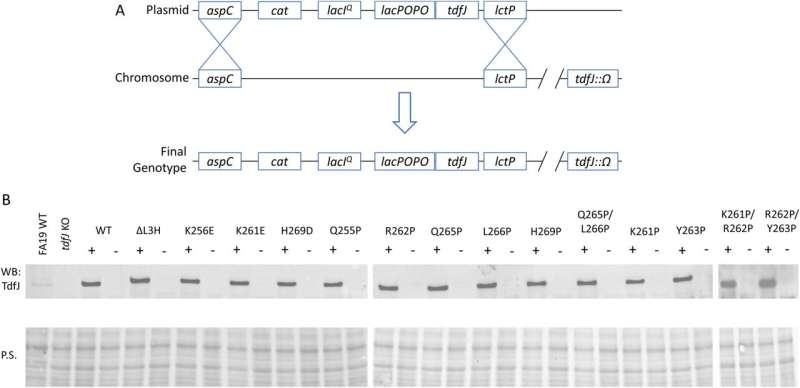Mutation in key molecules could stop gonorrhea infection

Creating a mutation that inhibits how the bacterial pathogen Neisseria gonorrhoeae causes gonorrhea, a common sexually transmitted infection, could offer a new way to prevent and treat the disease, according to researchers in the Institute for Biomedical Sciences at Georgia State University.
The researchers found that generating a mutation in a key part of the outer membrane transporter that N. gonorrhoeae uses to hijack human immunity proteins and strip them of metals could help to prevent gonorrhea infection. The findings are published in the journal mBio.
Gonorrhea, which affects more than 80 million people worldwide each year, is a global threat to public health because of the increasing incidence of antimicrobial drug resistance, rising treatment costs and lack of a protective vaccine. Up to 80 percent of cases in women are asymptomatic, and if left untreated, gonorrhea can lead to serious health consequences, including pelvic inflammatory disease, ectopic pregnancy, infertility and even life-threatening endocarditis and meningitis.
Effective treatment options for gonorrhea are decreasing because of evolving antimicrobial resistance to existing drugs. Also, it's challenging to identify suitable vaccine targets because N. gonorrhoeae alters expression of key surface molecules and dampens the immune response. To block invading pathogens from causing disease, humans rely on a process called nutritional immunity to limit the availability of critical nutrients such as iron and zinc and starve invaders. Metal-binding proteins sequester metals and limit the amount of free essential metal ions that pathogens need to flourish and cause disease.
To overcome host nutritional immunity efforts, N. gonorrhoeae deploys TonB-dependent transporters (TdTs) to its outer membrane to bind to host nutritional immunity proteins and strip them of their metals. TdTs often play key roles in establishing infections, making them promising vaccine targets.
One TdT named TdfJ recognizes human S100A7, a zinc-binding protein that inhibits the replication of pathogens by hiding zinc. N. gonorrhoeae uses TdfJ to extract zinc from S100A7 and internalize the metal. TdfJ contains an alpha-helix finger in extracellular loop 3.
A similar alpha-helix in loop 3 of another gonococcal TdT, known as TbpA, plays a critical role in the interaction between TbpA and human transferrin, which is required for the uptake of iron. Based on this information, the researchers hypothesized the TdfJ loop 3 helix (L3H) participates in interactions with S100A7, and they generated a series of mutations in the TdfJ L3H to determine if they blocked the ability of N. gonorrhoeae to acquire zinc and therefore to cause disease.
"The prospect of untreatable gonococcal infections has spurred efforts to identify targets for novel therapeutic and prevention strategies, and members of the family of outer membrane TonB-dependent metal transporters have emerged as promising candidates because they play a critical role in establishing infection," said Dr. Cynthia Nau Cornelissen, senior author of the study, Distinguished University Professor and director of the Center for Translational Immunology in the Institute for Biomedical Sciences at Georgia State.
"Our study revealed that mutagenesis of key residues within the TdfJ L3H reduced S100A7 binding and zinc piracy by the gonococcus, with the most profound effects seen with substitutions at residues K261 and R262. Taken together, these data suggest a key role for the TdfJ L3H in subverting host nutritional immunity."
The study characterized the binding interaction between the zinc importer TdfJ and its human zinc source, S100A7, and it also identified a key region of TdfJ that mediates this interaction.
"We detailed for the first time, the binding interaction for gonococcal TdfJ and its human ligand S100A7. We also identified several mutations in TdfJ loop 3 that alter S100A7 binding and subsequent zinc extraction," said Stavros A. Maurakis, first author of the study and a Ph.D. graduate of the Institute for Biomedical Sciences at Georgia State.
"With a more thorough understanding of the intricate relationships between these bacterial nutrient receptors and their host nutrient sources, we may help pave the way toward identifying effective prophylaxis and/or treatment for an important human disease."
More information: Stavros A. Maurakis et al, Mutagenesis of the Loop 3 α-Helix of Neisseria gonorrhoeae TdfJ Inhibits S100A7 Binding and Utilization, mBio (2022). DOI: 10.1128/mbio.01670-22
Journal information: mBio
Provided by Georgia State University




















